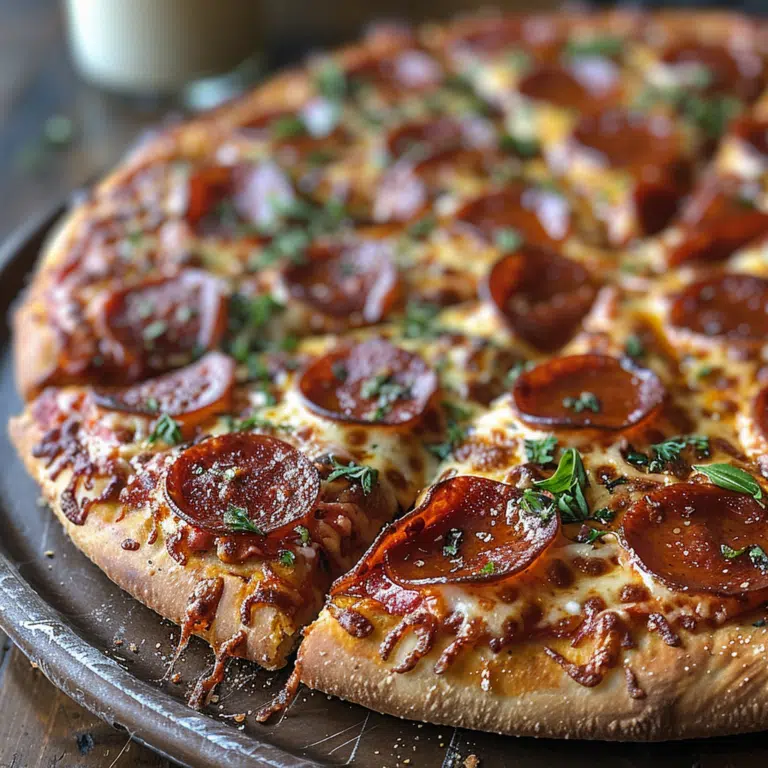Exploring the Ethical Dilemma Behind the Search for Painless Ways to Die
In the quest to understand the profound nature of our existence, seldom is there a topic as ethically provocative and deeply disconcerting as painless ways to die. This discussion goes beyond the boundaries of medical science and delves into the essence of what it means to confront our mortality with dignity and without suffering.
Searching for painless ways to die is a phenomenon that raises numerous ethical questions. In extreme cases of terminal illness or intractable pain, some view the quest for a painless death as a compassionate approach to alleviating suffering. However, it becomes a deeply complex issue when you consider the kaleidoscope of implications it has for society at large.
Medical professionals and ethicists are at the forefront of this sensitive conversation. Their role cannot be understated, as they not only provide care but also shape the discourse around end-of-life options. They are often caught in a tenuous balance between advocating for patient autonomy and upholding their Hippocratic oath.
Medical Advances and Painless Death: Prospects and Challenges
The current state-of-the-art in medical science offers a range of methods to ensure a painless death, notably in the realm of palliative care. However, this advanced care is not devoid of challenges, both ethical and legal.
Consider the transformations in palliative care at top-tier institutions like St. Christopher’s Hospice in London, which have pioneered ways to mitigate the end-of-life suffering. Here, pain management experts work meticulously to create protocols that help patients transition smoothly and painlessly.
Yet, the legal frameworks of euthanasia and assisted suicide remain uneven across the globe. These frameworks are critical as they delineate what is permissible and set precedents for painless ways to die. Insights from medical ethicists offer sobering perspectives on the movement towards such end-of-life care.
| Aspect | Information | Resources |
| Understanding Suicide | Suicide is a result of mental health conditions that can be treated. Suicide is never a painless or appropriate solution to problems, and it has devastating effects on families and communities. | – |
| Recognizing Ideation | Signs of suicidal ideation include preoccupation with death, talking about wanting to die, feeling hopeless, withdrawing from loved ones, and exhibiting extreme mood swings. | – |
| Warning Signs | Sudden changes in behavior, neglecting personal appearance, and engaging in risky or self-destructive activities can be indications that someone is considering suicide. | – |
| Immediate Help | If there is a risk of self-harm or immediate danger, contact emergency services (911) or a suicide hotline. | National Suicide Prevention Lifeline: 1-800-273-TALK (800-273-8255) |
| Professional Assistance | Reach out to mental health professionals, including psychologists, psychiatrists, and counselors who specialize in crisis intervention and suicide prevention. | Find a local mental health clinic or contact a primary care physician. |
| Ongoing Support | Create a support system by staying connected with friends, family, and support groups. Continuous emotional support is crucial for recovery. | Support groups, both in-person and online. |
| Coping Strategies | Develop coping mechanisms such as engaging in hobbies, regular exercise, maintaining a healthy routine, and practicing mindfulness or meditation. | Licensed therapists can provide personalized strategies. |
| Education and Awareness | Learn about the complexity of mental health issues and suicidal ideation through pamphlets, educational materials, and workshops. | Mental Health America, American Foundation for Suicide Prevention. |
Euthanasia and Assisted Suicide: A Global Perspective on Painless Death
The world is divided on euthanasia and assisted suicide laws, with places like Belgium and the Netherlands taking a more liberal stance. The accounts of individuals who have chosen assisted suicide are testament to the nuanced and personal nature of painless death decisions. Statistical data on the number of these cases and their perceived painlessness are noteworthy for policy considerations.
For example, the painless suicide debate is shaped by harrowing personal stories and the complex legal and ethical frameworks they navigate. This is further complicated as healthcare policymakers ponder the future and sustainability of assisted dying legislation.
Delving into Hospice and Palliative Care: Comfort at the Forefront
Palliative care is a beacon of hope, providing a pathway to a painless and dignified end. It is a place where comfort is prioritized above all else and where the sanctity of life is upheld until its natural conclusion. Palliative care specialists make it their mission to alleviate suffering, and their interventions become the final act of compassion for many terminally ill patients.
St. Christopher’s Hospice and other exemplary hospice programs have become synonymous with exceptional end-of-life care. Interviews with these specialists reveal the complexities of pain management and underscore the dedication required to deliver such a noble service.
Balancing Act: Ethical Debates Surrounding a Painless Exit
Philosophical debates ruminate on the ethical pursuit of a painless death. On one side, there are those who argue that the mitigation of suffering is a moral imperative, while others contend that life must run its natural course, unimpeded by human intervention.
Religious leaders and spiritual advisors have their convictions about life and death, which often influence the public discourse on this matter. The impact of offering painless ways to end life on societal values is continually debated, with public opinion split on the issue.
Personal Autonomy vs. Societal Impact: The Future of Painless Death Options
As technology advances, we are confronted with the possibility that painless ways to die could become more accessible. The potential involvement of Artificial Intelligence in making end-of-life care decisions is one such example that provokes both optimistic speculation and ethical trepidation.
However, the broader societal implications of these developments remain a subject of intense debate. As our technological capabilities grow, we must consider their resonance with the compassionate core of our humanity.
Innovations in Pain Management: Reducing the Need for Painless Death Solutions
In the field of pharmacology, novel pain suppressants are emerging as critical tools in the management of terminal illnesses. Non-pharmacological interventions, such as VR therapy and nerve stimulation, are also gaining traction as groundbreaking pain management strategies.
These advancements can potentially reshape our approach to care and significantly mitigate the necessity for individuals to seek out painless ways to die.
Ethical Frontiers: Rethinking Our Approach to the Inevitable
Our societal perception of death is evolving alongside these modern painless methods. A delicate balance must be achieved when formulating policies that accommodate personal choice and ethical constraints. Advocacy groups play a crucial role in navigating these waters and ensuring that the voices of the most vulnerable are heard and considered.
Embracing a Future Where Pain Does Not Define Death
We must envision a future where the fear of physical pain associated with death is a relic of the past. Thought leaders and visionaries are reimagining the human relationship with death, considering the profound shifts that can occur when suffering is no longer woven into our final moments.
In our journey through the delicate tapestry of painless ways to die, it’s evident that the challenge is not purely about eliminating physical pain, but redefining our approach to the closing chapters of life.
Loaded Media is committed to highlighting the undeniably complex, yet deeply human aspects of this discourse, as we strive to better understand and honor the essence of our shared humanity.
The Quest for Painless Ways to Die
When contemplating the distressing yet oddly compelling subject of painless ways to die, one might consider the existential quandaries posed by the acclaimed series “ I May Destroy You, which, while not a literal interpretation, explores themes of personal destruction and rebirth. Death is, after all, the ultimate unknown, and the show’s title inadvertently echoes the mysterious nature of our final moments, sans the physical pain, of course.
Now, speaking of unexpected endings, sports fans are likely familiar with the nail-biting suspense of a closely contested game, akin to the heart-racing thriller that was the Uconn Vs Croatia matchup. Imagine a game so intense it ends suddenly in overtime—quick and painless for the winners, that is. But the nature of these sudden endings shares a common thread with those hypothetical, quick exits from life—one minute you’re in the full swing of play, and the next… well, it’s all over. Remarkable isn’t it?
Shifting gears, let’s chew on the novel concept of Zambian Meat—not the actual cuisine, but a cyberspace oddity tied to a grim chat room bearing the same name. Visitors to Zambian meat( likely weren’t seeking a painless exit but rather a macabre connection over taboo topics, emphasizing how the digital realm can mirror our darkest curiosities. While we won’t dive into those murky waters here, it does highlight the range of human intrigue, from the grotesque to the earnest quest for a serene departure.
Moreover, wouldn’t you say that drifting away gently, perhaps while lounging on a plush chesterfield sofa, sounds downright poetic? Comfort, it seems, is a universal aspiration, whether in life or in contemplating its end. It’s the soft caress of luxury we often seek, wanting to assure that our final scene is as peaceful as the “na-na, na-na” interlude of Lyrics To All The Small Things, with life’s tumult fading into a soothing silence.
In our ongoing pursuit of tranquility, many find repose in the aromatic sanctuaries of Asian Spas, where the world’s hustle is barred from entry, and every breath guides you closer to Nirvana. Such escapes offer a glimpse at minting death with the same tender touch—void of strain, rich with serenity. And as we deliberate upon our inevitable exit, might we not prefer a trade-off as seamless and impeccably timed as the Jordan Poole trade? Sure, we may never truly master the art of the perfect exit, but as humans, we can’t help but wonder and wander, often in that exact order.
Do they call the police if you call the suicide hotline?
Do they call the police if you call the suicide hotline?
Whoa, hold your horses! Calling a suicide hotline doesn’t automatically mean they’ll send the cops your way. These hotlines are there to listen first and foremost, to help you navigate your feelings. If there’s an immediate danger, they may involve emergency services to ensure your safety, but it’s more about support and less about flashing lights and sirens.
What counts as suicidal ideations?
What counts as suicidal ideations?
If you’re wrestling with suicidal ideations, it’s like having a persistent little gremlin in your head, fixated on thoughts of ending it all. You might daydream about how to do it or ponder life without you in it. It’s like a broken record of dark thoughts playing on a loop in your mind.
When is someone considered suicidal?
When is someone considered suicidal?
Well, if someone’s acting like they’ve got one foot out the door, unusually slow or revved up, and suddenly couldn’t care less about looking sharp, they might be on a dangerous path. Acting recklessly or harming themselves is a massive, waving red flag that they could be considered suicidal.
What does a hope kit contain?
What does a hope kit contain?
A hope kit’s like a treasure chest of personal goodies that make life seem not so bad. Think photos, letters, maybe a beloved book or playlist—a bunch of stuff that says, “Hey, life’s got some pretty neat moments.”
Does having suicidal thoughts mean you have depression?
Does having suicidal thoughts mean you have depression?
Not necessarily, mate. While suicidal thoughts can be a heavyweight sidekick to depression, it’s not a given. Even sunshine-and-rainbow folks can find themselves in a dark place with these harrowing thoughts. It’s a twisted journey that doesn’t discriminate.
What to do when you are depressed and suicidal?
What to do when you are depressed and suicidal?
Hey, it’s tough, but don’t go it alone. Reach out to someone you trust or grab that lifeline – call a hotline or therapist. Sort through your jumbled feelings with someone who’s trained to navigate this stormy weather with you.
What do you say to a suicidal friend?
What do you say to a suicidal friend?
Listening is key, so let’s zip the lip and open those ears. Ask them what’s up and let them spill without interruption. Assure them you’re there and ready to pass the ball to professionals who can bring them back from the edge.
Who is often first aware of the warning signs of suicide?
Who is often first aware of the warning signs of suicide?
Usually, it’s those closest to the person, like family or BFFs. They’re the ones who notice if someone’s going off-script, swapping their usual behavior for something that screams “something’s up.”
How to handle a suicidal person?
How to handle a suicidal person?
First things first: be all ears. Get them to spill the beans about their feelings. If it feels like they’re heading towards the danger zone, don’t fly solo – get backup to keep them safe, whether it’s a professional or emergency services, stat.
When partner threatens suicide?
When a partner threatens suicide?
It’s like walking on eggshells, right? Stay calm, show you care, but remember, you’re not the cavalry. Get them in touch with someone who’s got the toolkit for this, like emergency services or a mental health professional.
Is the yellow ribbon for suicide?
Is the yellow ribbon for suicide?
Yep, gold star for you! The yellow ribbon is the universal code for “we’ve got your back” in suicide prevention. It’s a way to say, “You’re not alone, and there’s help out there.”
What is bark suicide prevention?
What is bark suicide prevention?
Bark’s like a cyber watchdog for kids’ and teens’ online worlds. It’s this nifty tool that parents use to sniff out potential risks in text messages, emails, and social media, helping them to bark up the right tree if there’s a hint of suicidal thoughts or behavior.
Who can be affected by suicide?
Who can be affected by suicide?
Let’s cut to the chase: suicide doesn’t pick favorites. Young, old, rich, poor—it doesn’t matter. It can touch anyone’s life, regardless of their story.
How to get mental health services without insurance?
How to get mental health services without insurance?
Even if you’re not swimming in cash or insurance, help’s still within reach. Look out for community health centers, sliding-scale therapy options, hotlines, and online resources that’ll give you a helping hand without draining your wallet.
Can you have depression without suicidal thoughts?
Can you have depression without suicidal thoughts?
Absolutely. Depression can be a tough battle without thinking about checking out early. For some, it’s more about wading through the fog of never-ending blues rather than flirting with the edge.


























